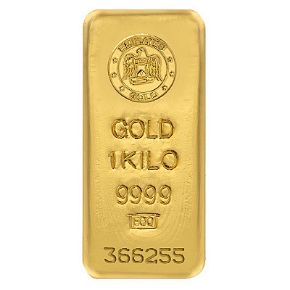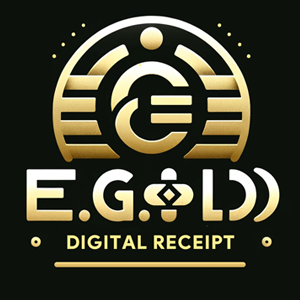
Cryptocurrency investments can yield significant returns, but many investors seek to diversify their portfolios by converting some of their crypto gains into tangible assets like physical gold. Gold has long been valued as a hedge against inflation and economic uncertainty, making it an attractive option for preserving wealth. This step-by-step guide will walk you through the process of converting your cryptocurrency gains into physical gold safely and efficiently.
Step 1: Assess Your Crypto Holdings and Goals
Before converting your crypto to gold, evaluate your portfolio and financial objectives. Determine how much of your cryptocurrency you want to convert and why you’re choosing gold. Are you looking to hedge against market volatility, preserve long-term wealth, or diversify your investments? Knowing your goals will help you decide the amount to convert and the type of gold to purchase (e.g., coins, bars, or bullion).
Action: Review your crypto wallet to identify the assets you’re willing to sell (e.g., Bitcoin, Ethereum).
Tip: Consider consulting a financial advisor to align this move with your broader investment strategy.
Step 2: Choose a Reputable Cryptocurrency Exchange
To convert your crypto to fiat currency (like USD, EUR, or GBP), you’ll need a trusted cryptocurrency exchange. Select an exchange with a strong reputation, high liquidity, and reasonable fees. Popular options include Coinbase, Kraken, Binance, or Bitstamp.
Action: Verify your account on the exchange, if not already done, to ensure compliance with Know Your Customer (KYC) requirements.
Tip: Compare withdrawal fees and processing times across exchanges to minimize costs.
Step 3: Sell Your Cryptocurrency for Fiat
Once your exchange account is set up, sell the desired amount of cryptocurrency for fiat currency. Most exchanges allow you to convert crypto to fiat and deposit the funds into a linked bank account.
Action: Place a sell order for your crypto, choosing between a market order (immediate sale at current prices) or a limit order (sale at a specific price). Transfer the fiat to your bank account.
Tip: Be mindful of tax implications. Selling crypto may trigger capital gains taxes, depending on your country’s regulations. Keep records of your transactions and consult a tax professional.
Step 4: Research Reputable Gold Dealers
With fiat currency in hand, find a reputable gold dealer to purchase physical gold. Look for dealers with a strong track record, transparent pricing, and secure delivery options. Examples include JM Bullion, APMEX, or local dealers certified by organizations like the Professional Numismatists Guild (PNG).
Action: Verify the dealer’s credentials, read customer reviews, and ensure they offer insured shipping or secure pickup options.
Tip: Avoid dealers with unusually low prices, as they may sell counterfeit or low-purity gold.
Step 5: Choose the Type of Gold
Decide whether you want gold coins, bars, or bullion. Each has its pros and cons:
Gold Coins: Easier to sell in smaller quantities, often carry numismatic value (e.g., American Gold Eagle, Canadian Maple Leaf).
Gold Bars: Typically lower premiums over spot price, ideal for larger investments.
Bullion: High-purity gold, available in various weights, suitable for most investors.
Action: Select gold products with high purity (at least .999 fine gold) from recognized mints or refiners.
Tip: Check the current spot price of gold (available on sites like Kitco or BullionVault) to ensure fair pricing.
Step 6: Purchase Physical Gold
Use the fiat from your crypto sale to buy gold from your chosen dealer. Most dealers accept bank wire transfers, credit/debit cards, or checks, though some may offer discounts for wire transfers due to lower processing fees.
Action: Place your order, specifying the type and quantity of gold. Confirm the total cost, including premiums, shipping, and insurance.
Tip: Request a detailed invoice and certificate of authenticity to verify the gold’s purity and origin.
Step 7: Arrange Secure Delivery or Storage
Decide how you’ll receive and store your gold. You can have it delivered to your home, a secure vault, or a safe deposit box. For high-value purchases, consider professional storage services offered by dealers or third-party vaults like Brinks or Loomis.
Action: Arrange insured shipping or pickup. If storing at home, invest in a high-quality safe.
Tip: Avoid publicizing your gold ownership to minimize security risks.
Step 8: Monitor Tax and Legal Requirements
Converting crypto to gold may have tax implications in both the crypto sale and gold purchase stages. In the U.S., for example, selling crypto triggers capital gains tax, and certain gold transactions may require reporting to the IRS. Other countries have similar regulations.
Action: Keep detailed records of your crypto sale and gold purchase. Consult a tax professional to ensure compliance.
Tip: Some jurisdictions offer tax advantages for specific gold investments, such as gold IRAs in the U.S. Explore these options if applicable.
Step 9: Direct Conversion (Optional)
Some platforms allow you to skip the fiat conversion step by directly trading cryptocurrency for physical gold. Services like Vaultoro or Bitgild facilitate crypto-to-gold exchanges, though availability depends on your region.
Action: Research platforms that support direct crypto-to-gold trades. Verify their reputation and fees before proceeding.
Tip: Direct conversions may reduce tax complexity but often come with higher fees or limited gold options.
Step 10: Stay Informed and Diversify
After converting your crypto gains to gold, stay updated on market trends for both cryptocurrency and precious metals. Gold is a long-term investment, so consider rebalancing your portfolio periodically to maintain diversification.
Action: Monitor gold prices and crypto market trends. Adjust your holdings as needed to align with your financial goals.
Tip: Avoid putting all your wealth into one asset class. A balanced portfolio may include stocks, bonds, real estate, and other assets alongside gold and crypto.
Converting cryptocurrency gains into physical gold is a strategic way to diversify your investments and protect your wealth. By following these steps—assessing your goals, choosing reputable platforms, and ensuring secure transactions—you can make the transition smoothly and confidently. Always prioritize security, verify the authenticity of your gold, and stay compliant with tax regulations to maximize the benefits of your investment.
NOTE
This Content is the copyrighted content of EE.GOLD. All rights are reserved. You are welcome to share or use our content only by including direct links to our website. Any other form of reproduction, distribution, or use without proper attribution is strictly prohibited.
This Content is intended solely for educational purposes. The information provided does not constitute financial or investment advice.
Please note that Digital Storage Receipt, Secure Storage Solutions, and Physical Gold Sales are the only services offered by EE.GOLD.
We strictly adhere to government regulations and are firmly against all illegal financial or investment activities globally.
For further inquiries, feel free to contact us through our official channels.










.png)

